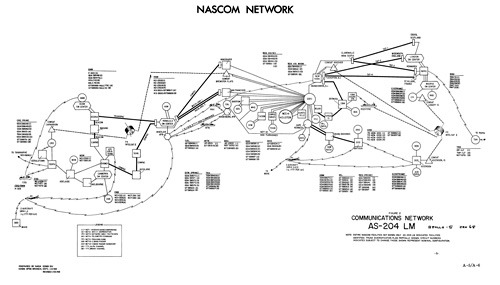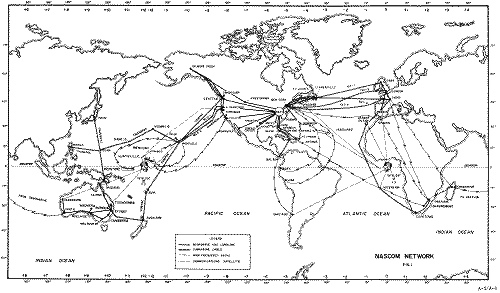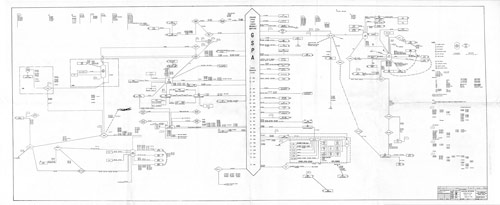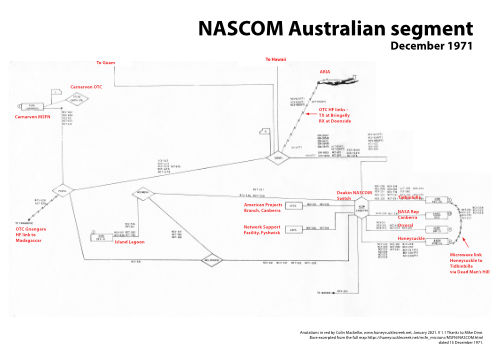The NASCOM Network for Apollo 5 (AS-204 LM). Bryan Sullivan writes that this diagram is from a NASCOM manual dated 22 January 1968, showing the world wide NASCOM communications network configuration for the AS-204 LM [Apollo-5] mission. “It shows the all the circuits back to the GSFC hub via all the trans Atlantic and Pacific trunks through the various switching centres from each tracking station and even the HF links to the ARIA aircraft and to the tracking ships.” Preserved and scanned by Bryan Sullivan, |
These two maps show the extent of the network for Apollo 11.
The NASCOM Network for Apollo 11 (AS-506). Map dated 25 June 1969. Preserved and scanned by Bryan Sullivan. |
The NASCOM Network for Apollo 11. Preserved and scanned by Bryan Sullivan. |
NASCOM between Apollos 15 and 16.
NASCOM Australian segment, December 1971. This excerpt from the December 1971 schematic above shows just the Australian segment. Red explanatory labels added. Click the image for a 3.2MB PDF file. Anotated by Colin Mackellar. |
Bill Woods, who was with OTC-A (the Australian Overseas Telecommunications Commission), writes:
It wasn’t always easy to get the right audio to and from the tracking stations – Goddard Voice was an incredibly complex switching centre. Here’s a snippet of audio from Apollo 11 revolution 1. After Capcom Bruce McCandless gets no reply, Houston COMM TECH Chester ‘Chet’ Brantley calls Tananarive. (Richard Stachurski writes that “Chet Brantley was one of the Philco-Ford guys who worked with us on the Green Team”.)




